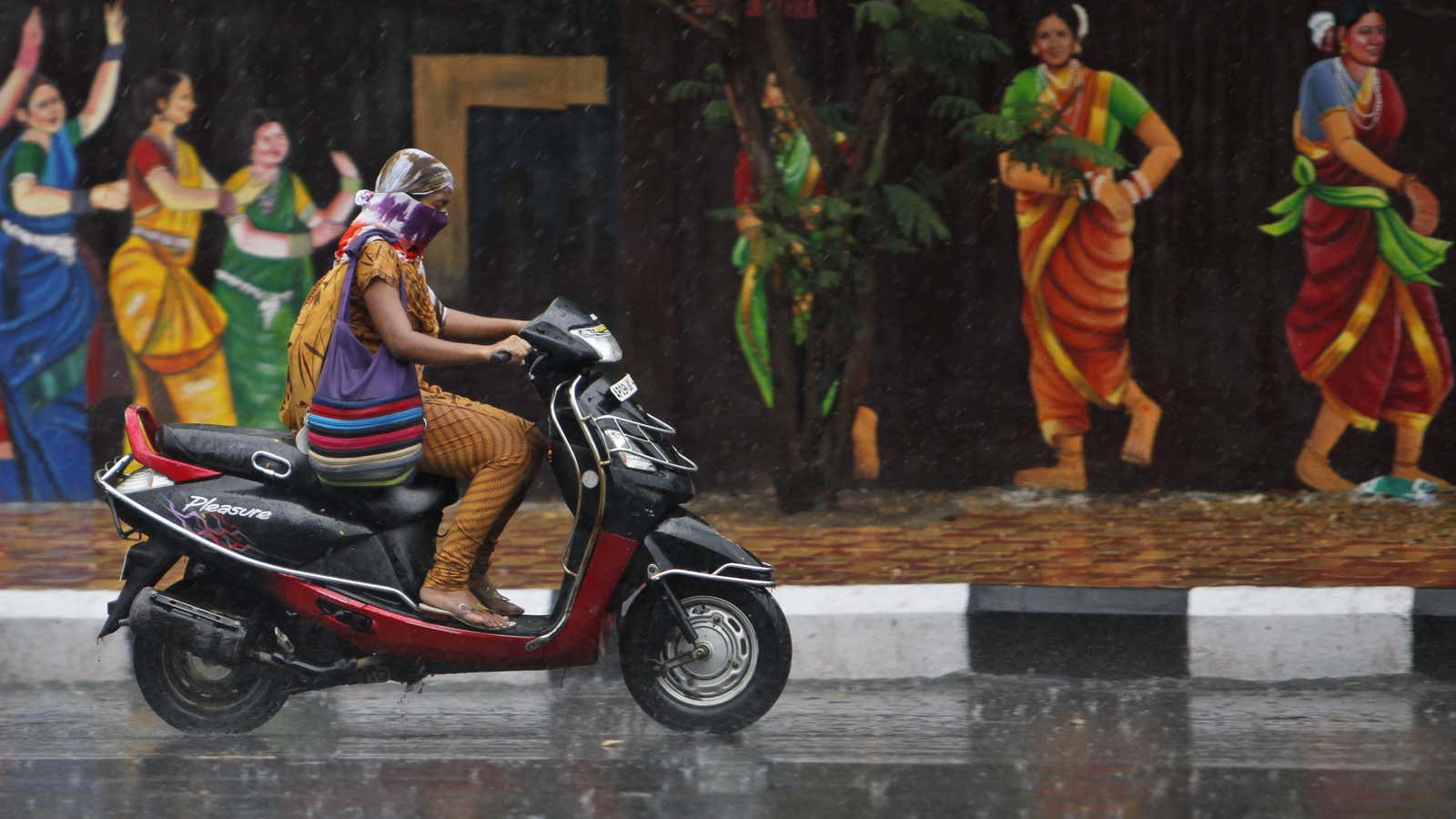The sharp decline in India’s rupee earlier this year set off plenty of jitters, as well as a surge in India’s always burbling inflation. (September wholesale prices—a key price benchmark—jumped 6.46% over the prior year. Prices for the all-important onion—a staple of Indian diets—are up 323% since last year.)
On the other hand, strong crop prices are a boon to India’s farmers. Combine those lofty prices with a monsoon that brought the most rain since 2007— and is expected to boost crop production across the country— and you have a recipe for a tidy boost in rural spending. In their weekend research note, JP Morgan economists wrote:
Domestic consumption appears to be running at different speeds. Rural demand—as evidenced by increasing sales in two wheelers and tractors—appears poised to rise due to the healthiest monsoon in six years.
Bloomberg notes that Tata Motors is now refining its focus on rural consumers. And tractor-maker Mahindra saw a 22% increase in quarterly farm equipment sales for the quarter that ended in September, compared to the prior year. While the rise in rural spending is a welcome offset to softness among India’s urban consumers, analysts aren’t especially hopeful the rise in will have long-term economic benefits.
In theory, rural demand would incentivize manufacturers to increase production and hire more workers, setting off something of a virtuous cycle. But long-standing bottlenecks in India—such as lousy roads, scant water availability, shaky power systems, corrupt officials and rigid labor laws—have historically acted as a constraint on increasing productive capacity. And if supply is constrained, prices typically rise to a point where they eventually undercut demand.
“Fundamentally, any pickup in consumption—whether concentrated in external or domestic sectors, or rural or urban demand—cannot be maintained if it is not accompanied by an increase in capacity,” JP Morgan analysts wrote.
